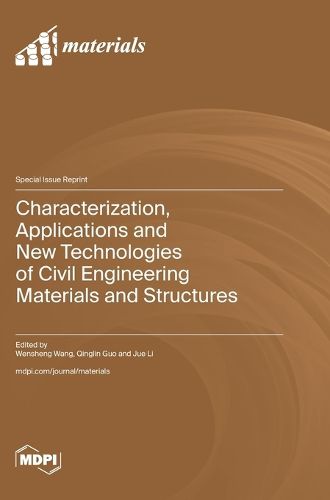Readings Newsletter
Become a Readings Member to make your shopping experience even easier.
Sign in or sign up for free!
You’re not far away from qualifying for FREE standard shipping within Australia
You’ve qualified for FREE standard shipping within Australia
The cart is loading…






This title is printed to order. This book may have been self-published. If so, we cannot guarantee the quality of the content. In the main most books will have gone through the editing process however some may not. We therefore suggest that you be aware of this before ordering this book. If in doubt check either the author or publisher’s details as we are unable to accept any returns unless they are faulty. Please contact us if you have any questions.
With the continuous development of large-scale maintenance of infrastructure, accurate, reasonable, and efficient mechanical behavior evaluation and performance prediction of civil materials and structures have become the keys to improving service durability and intelligent maintenance management for infrastructure. The multi-component composition, multi-scale characteristics, and multi-field dependence of civil materials lead to extremely complex mechanical behaviors. The phenomenological method based on empirical tests is an important means to understand and evaluate civil materials, but its low efficiency and high consumption cannot meet the design and application requirements of civil materials. Numerical simulation has gradually become an important tool to study and understand the mechanical behavior of civil materials and structures, including the finite element method, discrete element method, molecular dynamics simulation, etc. In addition, the rapid development of numerical simulations has greatly promoted the modeling and simulation of civil materials. Considering the above, the aim of this Special Issue is to bring together cutting-edge research and application. To share, present, and discuss innovative materials, structures, and characterization methods may help us further develop the technology used in civil engineering.
$9.00 standard shipping within Australia
FREE standard shipping within Australia for orders over $100.00
Express & International shipping calculated at checkout
This title is printed to order. This book may have been self-published. If so, we cannot guarantee the quality of the content. In the main most books will have gone through the editing process however some may not. We therefore suggest that you be aware of this before ordering this book. If in doubt check either the author or publisher’s details as we are unable to accept any returns unless they are faulty. Please contact us if you have any questions.
With the continuous development of large-scale maintenance of infrastructure, accurate, reasonable, and efficient mechanical behavior evaluation and performance prediction of civil materials and structures have become the keys to improving service durability and intelligent maintenance management for infrastructure. The multi-component composition, multi-scale characteristics, and multi-field dependence of civil materials lead to extremely complex mechanical behaviors. The phenomenological method based on empirical tests is an important means to understand and evaluate civil materials, but its low efficiency and high consumption cannot meet the design and application requirements of civil materials. Numerical simulation has gradually become an important tool to study and understand the mechanical behavior of civil materials and structures, including the finite element method, discrete element method, molecular dynamics simulation, etc. In addition, the rapid development of numerical simulations has greatly promoted the modeling and simulation of civil materials. Considering the above, the aim of this Special Issue is to bring together cutting-edge research and application. To share, present, and discuss innovative materials, structures, and characterization methods may help us further develop the technology used in civil engineering.